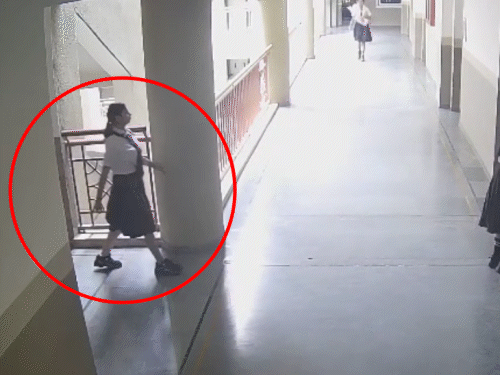13 Warning Signs of a Looming U.S. Recession: Economists Question Job Growth Data
Economists identify 13 warning signs of a U.S. recession, from slowing consumer spending to inflated job data. Revisions show weaker hiring than reported.

Washington, D.C., Tuesday, August 19, 2025 — Concerns about the strength of the U.S. economy are intensifying as economists warn of 13 clear warning signs pointing toward a potential recession. These fears come at a time when recent government revisions revealed that earlier reports overstated job growth figures, raising doubts about the reliability of official economic data.
While the Biden-era recovery narrative once emphasized strong hiring, the latest corrections by the Bureau of Labor Statistics show that the U.S. economy added far fewer jobs than initially reported. This discrepancy is now fueling criticism from both economists and lawmakers who argue that overly optimistic data has masked deeper structural weaknesses.
1. Job Growth Overstatements and Data Revisions
The most immediate warning sign is the revised job data itself. Analysts note that the original employment figures suggested steady expansion, but new updates reveal weaker hiring trends. This raises questions about the true health of the labor market, often used as a primary benchmark of economic stability.
2. Slowing Consumer Spending
Despite relatively strong wage growth earlier in the year, Americans are spending less. Inflation has forced households to cut back on discretionary purchases, and credit card balances are at record highs. Economists warn that weaker consumer demand could lead to reduced business activity in the months ahead.
3. Persistent Inflationary Pressures
While headline inflation has cooled compared to its 2022 peaks, core inflation—particularly in housing, healthcare, and food—remains stubbornly high. Families across the U.S. report difficulty managing everyday costs, a dynamic that could slow economic momentum.
4. Rising Interest Rates and Borrowing Costs
The Federal Reserve’s interest rate hikes, meant to control inflation, are now making mortgages, auto loans, and business financing more expensive. Small businesses, in particular, are struggling with reduced access to affordable credit.
5. Corporate Layoffs on the Rise
From Silicon Valley tech firms to Wall Street banks, layoffs are accelerating. Several Fortune 500 companies have announced staff reductions, citing declining profits, weaker consumer demand, and the need to cut costs.
6. Manufacturing Contraction
The U.S. manufacturing sector has entered contraction territory, according to the ISM Manufacturing Index. Factory orders have slowed, and supply chain challenges persist, adding to the downturn concerns.
7. Housing Market Weakness
Higher mortgage rates have cooled the once-booming housing market. Home sales are declining, new construction projects are being delayed, and first-time buyers face affordability challenges that limit demand.
8. Stock Market Volatility
Markets remain highly volatile, with investors reacting sharply to new economic data and Federal Reserve announcements. This instability reflects underlying uncertainty and has discouraged long-term investment.
9. Falling Consumer Confidence
Surveys show a drop in consumer confidence, with Americans increasingly skeptical about the direction of the economy. This erosion of optimism often precedes reduced spending, further amplifying recession risks.
10. Mounting National Debt
With the U.S. national debt surpassing $35 trillion, economists caution that federal spending remains unsustainable. Concerns about long-term fiscal responsibility could limit the government’s ability to respond effectively to future downturns.
11. Regional Bank Struggles
Several regional banks remain under pressure following last year’s banking sector turbulence. Rising interest rates have squeezed margins, and exposure to troubled commercial real estate loans is growing.
12. Global Economic Slowdown
The U.S. economy does not exist in isolation. Slower growth in China, Europe, and Latin America is dampening global trade, reducing demand for American exports and complicating the recovery outlook.
13. Political and Policy Uncertainty
With a heated presidential race underway and debates over fiscal policy intensifying, businesses remain cautious. Economists say political gridlock could make it harder to implement effective strategies if recessionary pressures deepen.
Economists Divided on Recession Timeline
While not all analysts agree that a full-scale recession is inevitable, the consensus is that risks are climbing. Some experts forecast a downturn within the next 12 months, while others suggest the U.S. may experience slower growth rather than a sharp contraction.
Economist Claudia Sahm, known for developing the “Sahm Rule” recession indicator, told reporters this week that the revisions in job numbers “erode confidence in government statistics at a time when accurate data is critical.”
Broader Implications
If the warning signs continue to build, both businesses and households may need to brace for tighter credit conditions, rising unemployment, and weaker overall growth. Policymakers will face mounting pressure to act, balancing the need to contain inflation with avoiding a deeper downturn.
As the debate over data reliability continues, many Americans remain focused on what they see at the grocery store, the gas pump, and in their paychecks — everyday realities that may matter far more than official statistics.
What's Your Reaction?
 Like
0
Like
0
 Dislike
0
Dislike
0
 Love
0
Love
0
 Funny
0
Funny
0
 Angry
0
Angry
0
 Sad
0
Sad
0
 Wow
0
Wow
0







































































